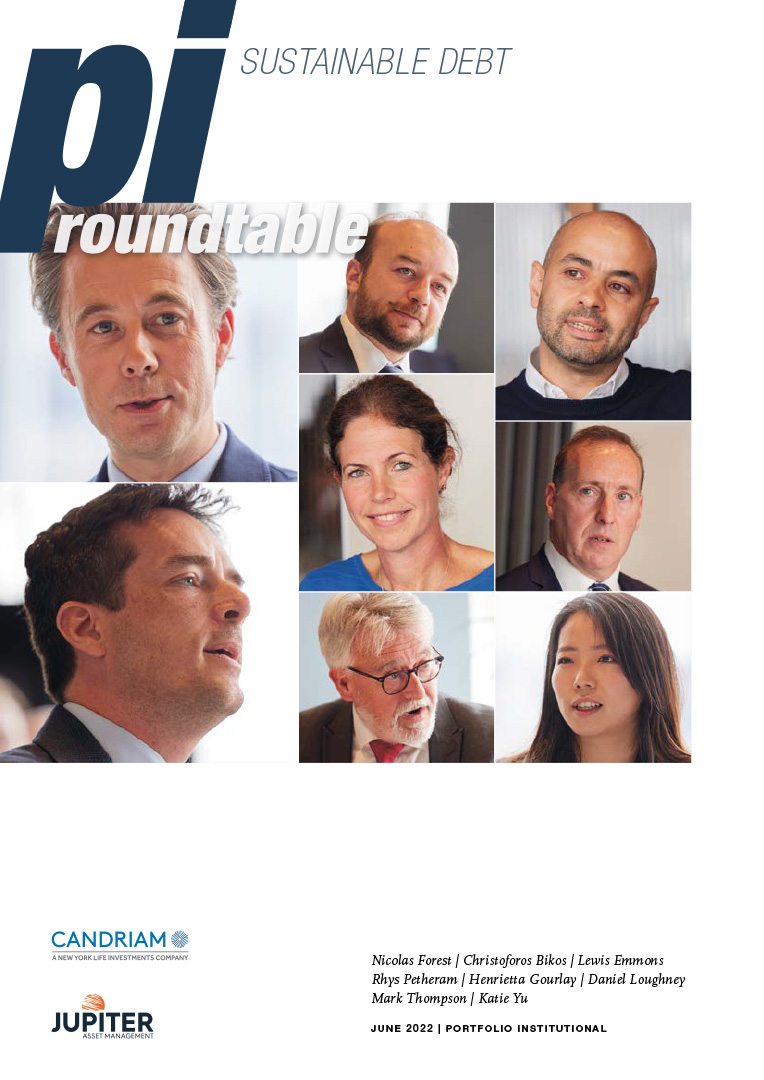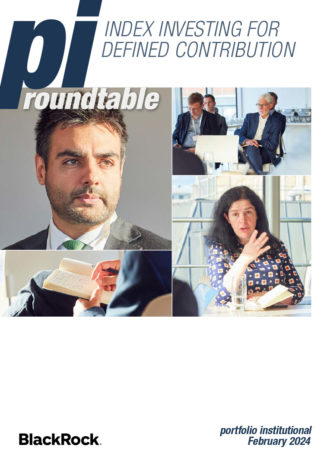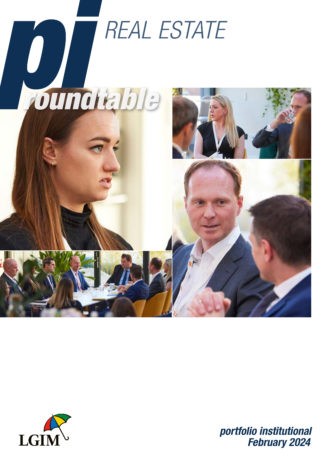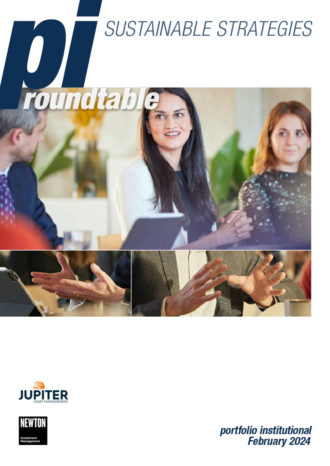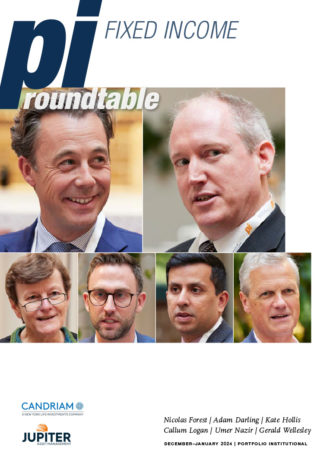We sat down with pension schemes, an insurer, asset managers and consultants to find out how institutional investors are navigating the debt markets to meet their sustainability targets while generating the secure returns they need to pay their members’ benefits.
Participants
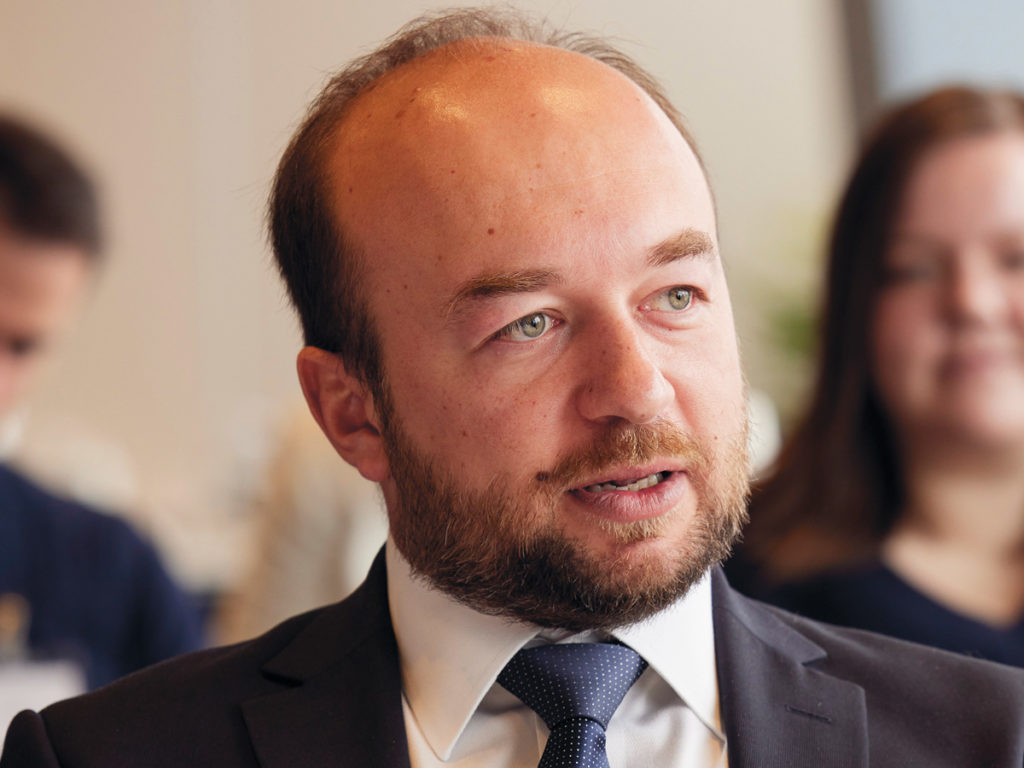
Christoforos Bikos
Senior vice president, manager research, Redington
Christoforos Bikos is responsible for manager research and selection in liquid and semi-liquid fixed income strategies. Before joining Redington in 2015, he spent three years in manager research at Towers Watson and was previously a researcher at the Aristotle University of Thessaloniki in Greece.
He has served in the Hellenic Air Force and has studied in Macedonia and London.
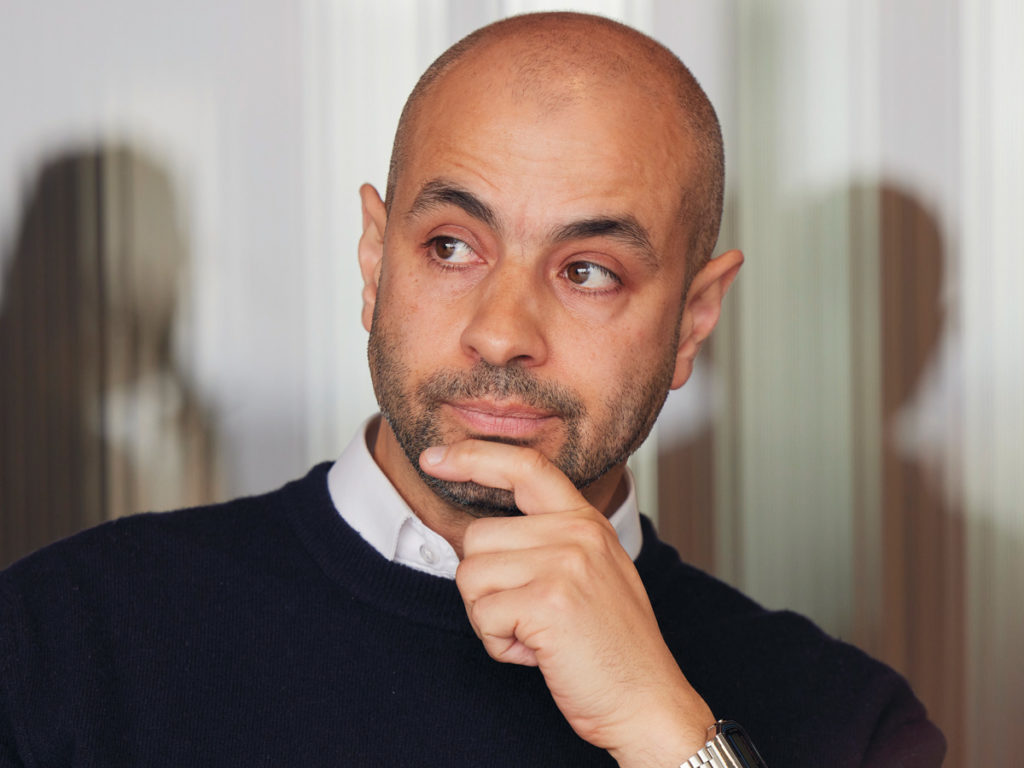
Lewis Emmons
Principal, fixed income manager research, Mercer Investments
Lewis Emmons is a principal in Mercer’s fixed income research team. He researches public market bond strategies and is a member of the benchmark agnostic and liability-driven investment research committees.
Emmons joined Mercer in 2008 from Moody’s Investors Service where he was a financials credit analyst. Before joining Moody’s, he was an emerging market sovereign analyst at Informa Global Markets specialising in Latin America and Central Europe. He began his career in the structured capital markets team at Barclays Capital.
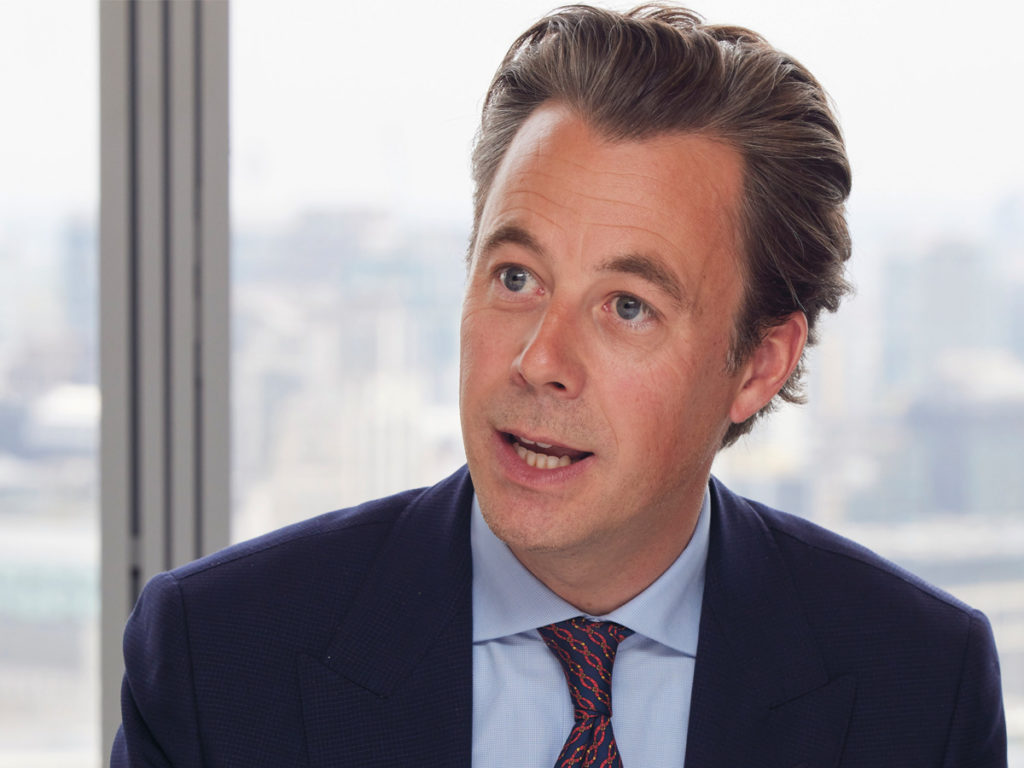
Nicolas Forest
Global head of fixed income, Candriam
Nicolas Forest became Candriam’s global head of fixed income in 2013, joining the firm’s executive committee three years later. He is responsible for the fixed income strategy and global bond funds as well as co-managing the total return funds.
Forest started his career as assistant structured products manager at CDC-Ixis in 2003, before joining Candriam in 2004 as a money market fund manager. In 2008, he was appointed head of the rates strategy.
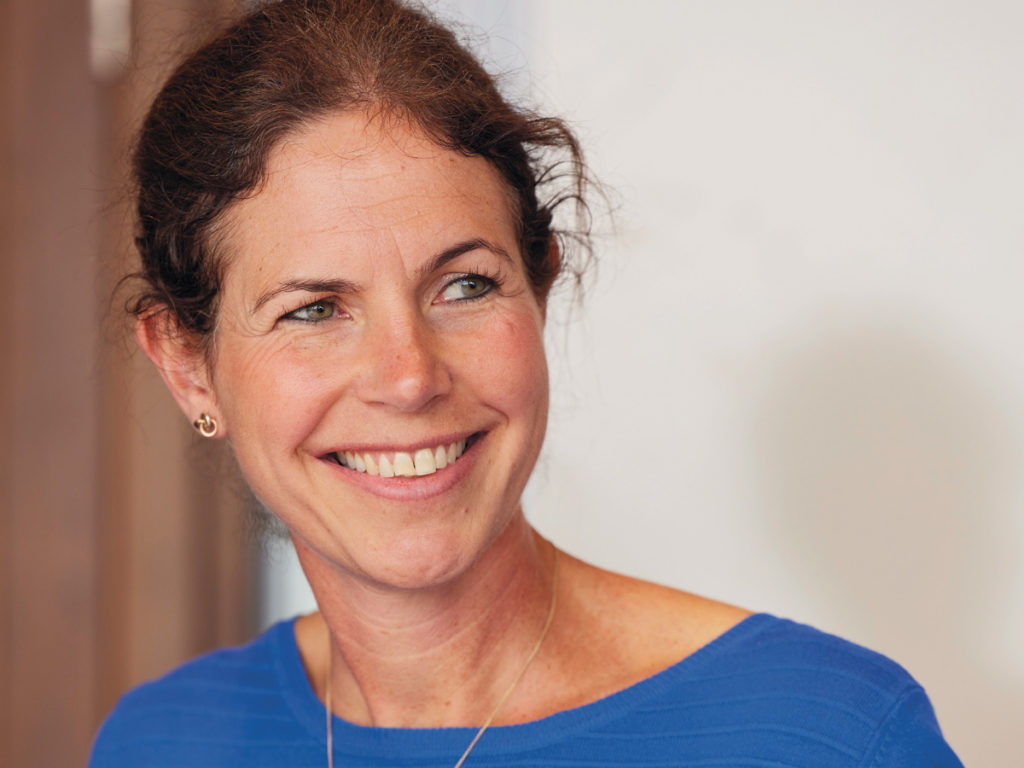
Henrietta Gourlay
Investment manager, financial investments portfolio, Grosvenor Family Office
Henrietta Gourlay has been an investment manager at Grosvenor Family Office since 2018. Her previous roles have included running the high-yield sales desk at Mizuho and spending a decade investing in high-yield bonds in Europe and Asia. She started her career at Mercury Asset Management in 1999.
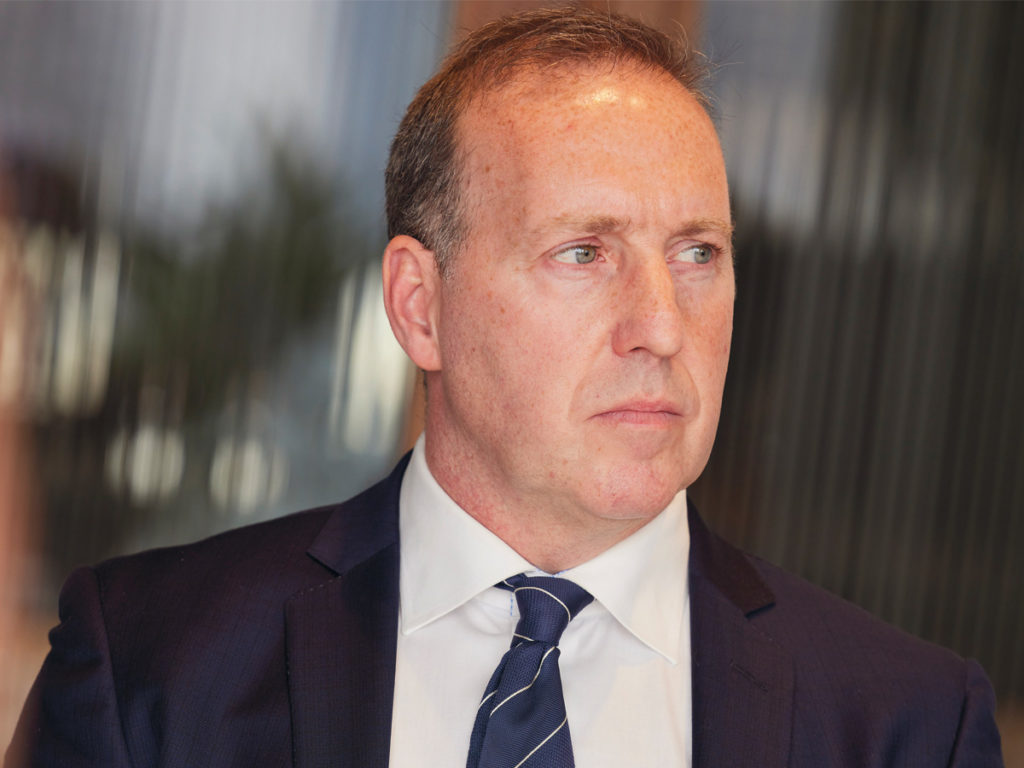
Daniel Loughney
Senior portfolio manager
Border to Coast Pension Partnership
Daniel Loughney is a global multi-sector fixed income portfolio manager currently specialising in developed and emerging market bonds. He has more than 25 years’ experience of asset management, during which time he was head of institutional sovereign fixed income at Legal & General, head of emerging market debt at West LB and senior vice president, head of EMEA rates and currency at Alliance-Bernstein.
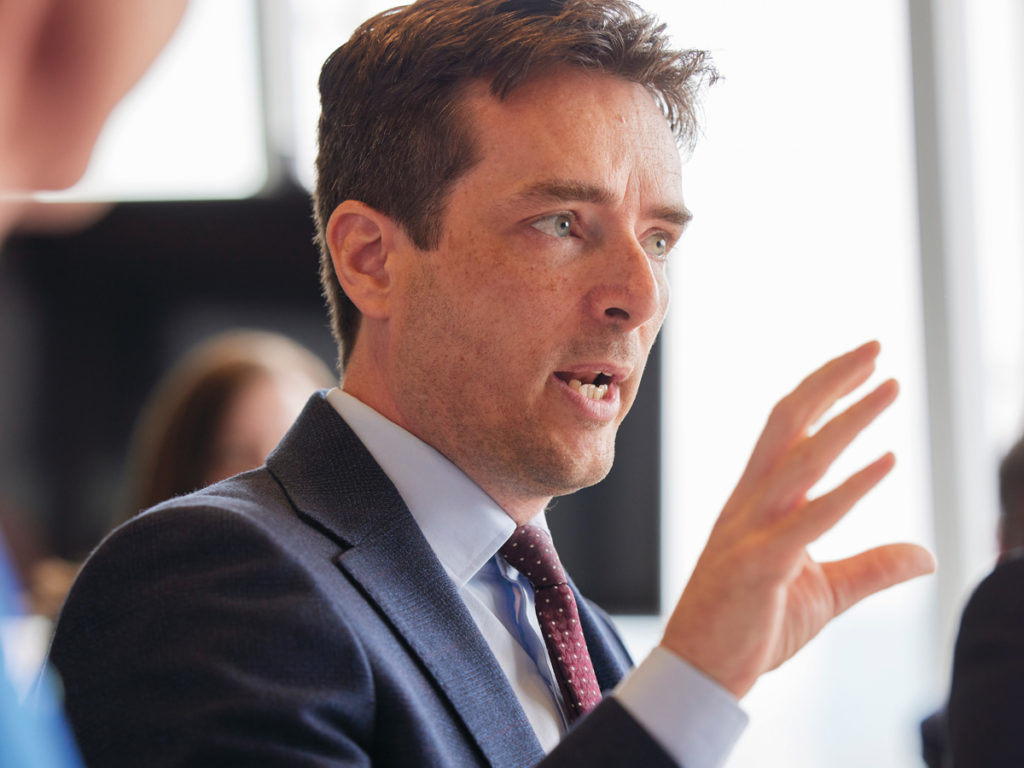
Rhys Petheram
Fund manager, head of environmental solutions, Jupiter Asset Management
Rhys Petheram joined Jupiter in 2006 having worked as an analyst at Towers Perrin Australia. Prior to that he was a utility-focused credit analyst at Moody’s Investor Services.
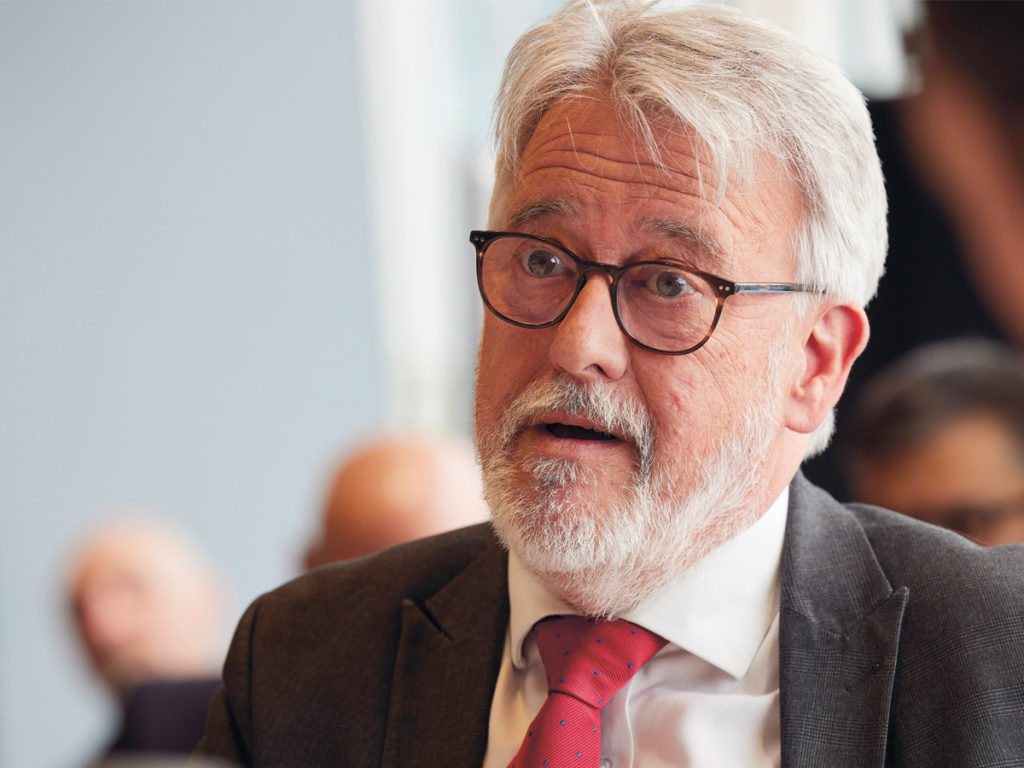
Mark Thompson
Chair of trustees, investment committee member, Several pension funds
Mark Thompson has been investing on behalf of pension schemes for more than 35 years and currently works for the retirement funds sponsored by UBS, M&G and Lloyds. For almost a quarter of a century, Thompson held several senior investment roles at Prudential, which included being a trustee of its pension scheme. He then spent eight years as chief investment officer of HSBC’s UK pension scheme.
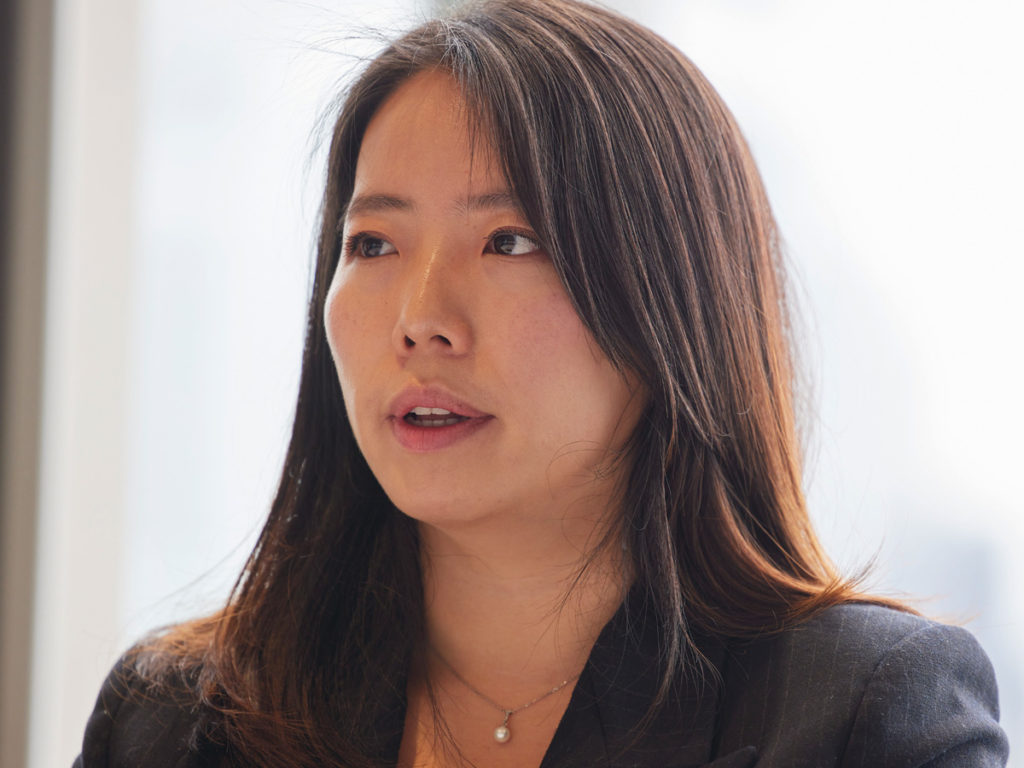
Katie Yu
ESG credit analyst, Phoenix Group
Katie Yu is the main gatekeeper for fixed income in Phoenix’s ESG investments. She joined the insurer in late 2021 after spending four years as a corporate credit portfolio manager at DWS, where she was responsible for non-discretionary client portfolios with a focus on investment-grade corporate credit and global convertible bonds.
Yu has also been an equity research analyst at Standard Chartered.
The discussion
Henrietta, at a roundtable we hosted last year you said that despite building sustainable portfolios you do not invest in green bonds. Has that changed?
Henrietta Gourlay: No. I need more reassurance that the money we invest will be used properly. My biggest concern is that while green bonds are ringfenced for certain projects, if an issuer gets into financial trouble the proceeds could be used to pay a debt.
Investment banks should get more involved by implementing stronger controls, while the rating agencies could take more of a stance. For example, a bond losing its sustainable rating should impact the issuer’s rating. You need proper buy in for that, but it isn’t there. That’s why I’m cynical.
Rhys Petheram: Henrietta is right to be cynical. The frameworks used in the green bond market are loose. There is no definition of what is green and only 20% of green bonds are certified.
To get comfortable with investing in green bonds there has to be a verification process alongside an assessment of the issuer. It is all about the issuer’s journey. The green bond connects the dots between where they are and where they want to get to.
So, this is how you avoid greenwashing?
Petheram: A big chunk of our universe is weeded out. Some sectors are more guilty than others, such as property, which is challenging.
Nicolas Forest: Sustainable bond issuance reached $1trn (£816bn) in 2021. If we continue like that, the market will be worth $5trn (£4.1trn) by 2025.
Then there is the Sustainable Finance Disclosure Regulation (SFDR). A year after it was implemented, €4trn (£3.4trn) of capital in Europe follows articles 81 and 92.
We have to invest in green bonds, but it is a huge market, which makes it difficult to identify the best ones. So, there is value in an ESG analysis of the issuer and a good use-of-proceeds analysis.
This is not just about following the Green Bond Principles, but to check if the bond is consistent with what the issuer says as well as to monitor the reporting and the KPIs.
This is the beginning of a decade of expected higher green and social bond issuance. Rating agencies are not enough. A good active fund manager is needed to select the best green bonds.
Katie Yu: A key lever you can pull to relieve this anxiety is to tell the issuer how you want their company to change and agree the ESG or climate KPIs before they come to market.
Gourlay: That should come from the syndicated banks. Individual bond investors, even institutional investors, do not have any power. It needs to come from the top.
On the use of proceeds point, it just takes one sentence – “… and general corporate purposes” – for an issuer to use it for something else.
Christoforos Bikos: We have spent a lot of time with asset managers discussing SFDR and Article 8. My perception is that application of this regulation depends heavily on the compliance department.
It is a tick box exercise rendering the Article 8 – and any SFDR classification – useless for the vast majority of Article 8-compliant funds.
The green bond market is oversubscribed, so you are buying green bonds for a higher price than a standard bond from the same issuer. Why would I pay $110 for a green bond when I could pay $100 for a standard with identical characteristics – maturity, duration, coupon – from the same issuer especially if with the green bond credentials point to an issuer that moves towards the right direction?
The majority of SFDR-compliant funds are forced buyers of green bonds, which will continue to give the market a bad name.
Petheram: The green bond market was created to close the financing gap. The point is to get investment into the technologies needed to make this transition. So, when considering paying 100bps or 110bps, the question is: what is the issuer doing from an investment perspective? That is going to become increasingly important.
The funding needed to make the transition on climate change is enormous. So, the capital potentially coming to market could be considerable and even out the supply-demand in balance.
Forest: Coming back to the point about the greenium, in European investment grade it is between 2bps and 5bps. The average spread is close to 130bp, so I do not see the problem of having such a greenium, depending on the issuer.
Bikos: That is a snapshot in time and markets change. In 2021, the greenium was negative but over the long-term as more issuers enter the market, I expect this to self-correct.
Lewis Emmons: This is a great opportunity for active managers. The points made about the challenges of identifying the use of proceeds in the green bond space and understanding and evaluating KPIs in the sustainability-linked bond space goes to the importance of doing your own analysis, of evaluating managers who not only have access to the raw data but understand how to utilise and apply it.
Daniel Loughney: For now, you need a strong research bench to be a good sustainable bond investor. We are looking to set up a fund and on the investment grade side and we will likely bring in external managers to do that research.
Trying to square that circle and jump a few years ahead, Europe has developed standards to help small investors buy covered bonds. They have been developing a green bond standard for some time.
It is well advanced and when it comes into effect the authorities will bring in outside people to monitor it, such as S&P or Moody’s. That will allow smaller investors, who do not have the research capability, into the market.
We will get the supply – the $6trn (£4.8trn) or whatever we need – which will coalesce with better regulation allowing smaller investors into the market and compressing the greenium.
That is the roadmap we are heading into, but from my experience of covered bonds, setting out to get a label takes five to six years.
Mark Thompson: I come at this from another angle. I want my bond funds to be sustainable, I do not necessarily want a sustainable bond fund.
As a fiduciary, I have to make a good return. Therefore, I expect my bond managers to assess the credit worthiness of the issuer, taking into account all of the risks and opportunities pertaining to that issuer. But I will never tell my bond managers to buy green bonds, no matter the premium. My objective is to save pensions, not the planet.
However, if you incorporate the risks and opportunities in assessing the credit worthiness of the issuer, and the manager is doing it well, then you end up on the right side of the angels, as opposed to starting with: “I want to save the planet.” I do not know any pension scheme that only wants to invest in green bonds.
Forest: The regulation will change. There are a lot of possibilities to promote green bonds in pension funds with tax incentives.
Thompson: That has not happened in the UK yet. I do not feel a UK trustee board would go against their fiduciary duty of getting an appropriate return just to invest in green bonds. Having said that, it does not mean you cannot achieve an appropriate return through green bonds.
The label of green is tricky. Some bonds are not labelled green but are green. We need more of an understanding as asset owners about what the fund manager is doing and why they are doing it.
Stewardship is important, too. You cannot do the stewardship part without thinking about how you are doing it from an equity perspective. The equity and bond parts have to come together.
How easy is it to build a sustainable debt portfolio if you are not looking at green bonds?
Thompson: It is not easy, but it depends what type of bond portfolio you are putting together. Increasingly, defined benefit schemes are looking for buy-and-maintain credit mandates.
So, it is about deciding what universe you want your manager to fish in. That is going to pull you towards companies which are more sustainable in the long run and, therefore, your portfolio will move in that direction.
As an asset owner, I do not tell the fund manager what to do. I set the parameters for them. I worry about labels because they can have unintended consequences.
Bikos: This is an important point. If you look at most buy-and-maintain mandates, due to the way the market is structured, they have a lot of utility exposure. Utilities look bad on a CO2 emissions basis, but they have made strong commitments to change.
Forget about the label, it is about the direction of travel. As long as we can hold them accountable and issuers can demonstrate a clear plan of action we will support their plans.
Emmons: Mark made an interesting point around the different approaches institutional investors are taking to build sustainable portfolios. In the fixed income space, everyone understands the importance of good ESG integration as a risk management tool.
It is different from the equity space, where it is more about upside capture. The asymmetry in bond markets means that it is predominately about longer term risk management. The evolution we are seeing today in the sustainable space is just an extension of this.
Every client will have different priorities, but it should not be about giving up returns. Good, solid ESG integration is the minimum standard people should focus on as a risk management tool.
Yu: ESG integration started with excluding controversial sectors. Now we are thinking about ESG scores.
But the major focus we have as an asset owner is meeting our net-zero goal and how that is reflected in our fixed income portfolios. Climate risk is key when focusing on this space and green bonds could be a climate-solution investment.
For the majority of the portfolio, we should have a common framework for investing in the climate KPIs we are looking at to harmonise our investment approach.
For example, there are more sustainability-linked bonds today and each has different clauses, so we need a common framework to assess them. There needs to be regulatory changes on the sustainability-linked bonds side.
Forest: Green bond is not just a label. We decided to finance a project with a clear KPI, to accompany a specific issuer in their transition.
Thompson: So, if an issuer has a green bond and a traditional bond, which have the same duration, but the green bond is more expensive, as a fiduciary, should I buy the green bond?
Yu: It goes back to fundamental research. Ask why there is a basis point difference between bonds with the same maturity, duration and credit rating.
Perhaps, investors put credentials on these green bonds as, given their dialogue with the company, they understand the ESG strategy. If you believe in the strategy and believe there is an opportunity for value creation, there is an incentive to put money into that bond.
Thompson: Where is the value creation coming from because it is the same issuer?
Forest: I agree with what you say from a buy-and-maintain perspective, but benchmark and absolute return investors could make money from selling their green bonds, if the market is strong.
So, for buy and maintain, there is a problem, and that is why I expect a tax change to create an incentive to invest in green bonds.
Thompson: So, a tax will change the way a fiduciary assesses green bonds?
Forest: There is some interesting analysis in the US and Europe on investors who receive tax credits from green bonds instead of interest payments. The government could introduce something like that.
Petheram: For our Ecology funds, we focus on issuers we feel are delivering these solutions. If a company is issuing a green bond alongside a conventional bond and that issuer is o ering those solutions, I will buy the bond that is better value.
Vodafone, which did not pass our green bond framework, issued two conventional and a green bond on the same day with no pricing difference. The money goes into the same bank account.
Fast forward 12 months, you probably will find reporting advantages from the green bond market as the UK Taxonomy comes in.
Thompson: Tax advantages make more sense to me. What is the objective of better reporting?
Petheram: We have talked about labelling, the point of which is to identify green investment activity and avoid greenwashing. It was not about transitioning companies. It was about how we enable those companies to transition as an investment activity.
This is what the EU and UK taxonomies are designed to identify, to facilitate the flow of funds into that activity. So, we all have to report on how our funds are delivering on that investment activity.
That is where green bonds could come into favour from that perspective. Rightly or wrongly, we will be able to report a number based on the projects rather than a company.
For our impact reporting, we want to present a number of investing activities for the bond, and outside of the bond here is the number for the corporate. It is up to the individual investor to decide where they sit on that spectrum. It is right to give them those numbers, but you do not see that in any green bond report.
Thompson: More transparency is better.
Gourlay: Why didn’t Vodafone’s bond pass muster? Is it because it is not actively helping the environment?
One of my other issues when looking at a green fund is that they have a couple of bonds which are pro-actively trying to help the environment and then bonds which are neutral in that they are not harming the environment.
Petheram: For us, when we sat down with Vodafone, it came down to intentionality. I have looked at telcos for 15 years and not one has said they are building a network upgrade for the environment. Now, suddenly, they are.
It is about increasing bandwidth and data usage. From a social perspective it is quite interesting, but the intentionality was not there from a green perspective.
It is also controversial to claim that network upgrades are more efficient and save energy. Network upgrades encourage people to use more data.
Gourlay: I have a big issue with companies like Meta. The impact on the environment is almost Scope 23, it is not direct. Would green bond funds consider that?
Petheram: Put it this way, I see telcos throughout my competitor funds.
Forest: The first pillar of green bond analysis is issuer analysis. Then we make a use-of-proceeds analysis. We need consistency between what an issuer says and what they are doing with the green bond to avoid greenwashing.
To answer your question about green bond funds, Candriam targets the Sustainable Development Goals. For all green and social bonds, we can see how we identify and target specific sustainable development goals with different projects and KPI. For that we need clear transparency and reporting. If we do not have that, we will not invest or will start an engagement with the company.
Gourlay: How do you deal with conflicts? The environment is important and in the West we are rich enough to have luxury and not think about it, but in parts of Asia, where the world’s carbon footprint is coming from, the S is more important. How would you deal with a coal company, for example, where if you do not fund it, lots of people could lose their jobs? It is good for the E but not the S.
Forest: That is a challenge when you have to invest in emerging markets. We have to be creative in selecting issuers. We could also invest in social bonds.
There are also working groups. In Indonesia, for example, there is an investor group which has a dialogue with companies concerning deforestation and the government. Candriam is working with the asset managers which are part of this organisation to make an impact.
Emmons: Green, sustainable and environmental are also about the transition pathway. While it is fair to say that certain parts of the emerging world generate a lot of emissions, it is perhaps true that parts of the developed world have been doing that for longer and may be outsourcing their carbon footprint.
It is difficult when you talk about China and other countries outsourcing their carbon footprint. It comes back to the need for transparency, strong independent research and raw data to identify idiosyncratic risk and where the best opportunities are.
It is not enough to assume that carbon emissions are weighted towards a particular geography or sector, in-depth analysis needs to be conducted.
Thompson: We haven’t talked about stewardship being harder in the bond world. For me, it is about how we, as asset owners, put pressure on our fund managers to engage with issuers to see how they are progressing over time.
If you have labels, such as green bond, it helps, but it doesn’t get away from the pressure you can still apply as an asset owner on those issuers.
It could be a case of a bond being issued which is not labelled green but knowing from your stewardship that the issuer will use the proceeds to make themselves more sustainable.
Forest: In 2020, Candriam started an engagement framework for high-yield issuers. We want to invest in high-yield sustainable debt, which is a challenge.
The idea was to identify two types of issuer. One is having a lack of disclosure about indicators and no ESG score and then another is a bad ESG score. An issuer can have a bad score because of poor transparency.
We have started to engage with German companies, for example, to improve the transparency of their reporting. Thanks to that we are more comfortable investing in their bonds.
Petheram: I lead a mixed asset team, so equity, fixed income and multi-asset funds. We all come together to plan our engagement strategy for the year.
In the UK, it is now part of the Stewardship Code that fixed income investors have to engage. But it is not part of the Corporate Governance Code. It is a two-way street, right? Companies need to have to engage with you. So, there are still hurdles and barriers.
Thompson: You are talking about codes, but if it just makes sense, you do it.
Petheram: You have to be realistic about the efficacy in certain sectors and choose your battles. So, which companies and countries could I effectively engage with?
70% of the investment required to meet our climate goals has to be in emerging markets. It is going to be a big part of our funds, so how do traditionally developed market-focused funds deal with that.
I find it amazing that Egypt’s green bond was hoovered up by sustainability funds despite the human rights violations. That didn’t feel right. We did not have a framework to engage, so we have built one using the UN’s Global Compact initiative and we screen out governments we feel we cannot engage with.
Emmons: Engagement is key. A manager will not achieve a high ESG rating if they cannot show evidence of strong engagement. Just integrating ESG is not enough.
There has been a step change in the extent to which fixed income investors can engage. It used to be the purview of the equity investor.
These days there are many examples of how fixed income investors can engage with an issuer, but it varies between asset classes.
In the government bond space, you could argue it is easier in certain emerging markets to have influence, particularly if you have size and scale. You can also have influence in some of the more nuanced sectors of the market.
You tend to have most influence in credit, and it can differ by sub-asset class. There can be a differential between investment grade and high yield. You might argue that you have more influence in the high-yield market. It is a topical point but certainly engagement is essential.
Loughney: On engagement, are active sustainable investors getting together as industry groups?
Forest: When we want to engage with a government issuer, yes.
Petheram: There are legal constraints, which have been a massive barrier for a long time. There are a few, but it is early days.
Forest: Engagement has become the focus and this is only the beginning.
Petheram: Where the market could do better is in improving the frameworks. The Green Bond Principles, for example, is a group of investors, issuers and non-government organisations. Investors have not formed a good enough group themselves to improve the rigour of those frameworks.
Yu: An engagement can take three years minimum to make an impactful change. It is a long and heavily-resourced activity. A way that small asset managers can take advantage is to not just rely on the asset managers, but also leverage on the ESG data providers. ISS [Institutional Shareholder Services], for example, has a collective engagement programme.
When they engage with companies about the ESG perspective, it will include questions from asset owners in the engagement process. Investors can then track what improvements the company has made.
Thompson: Engagement has certainly grown on the bond side, but to the fund managers among us: are you getting pressure from the institutional investors to engage more or is it something you believe is the right thing to do?
Forest: There is pressure, especially when you invest in emerging markets or high yield. We know that ESG scores are not great, so we need to engage with these issuers.
Petheram: There is a double lens to this. It is not just about companies producing responsible outcomes, it is also about maximising your risk-adjusted returns.
Thompson: But are you getting enough push from the people whose money you are managing to do more of that?
Forest: It is difficult as a bond investor to engage with all the issuers. We have to be realistic here.
Gourlay: And for them to have all their bondholders call up to engage. It must be a nightmare.
Loughney: There is pressure. Some of our partner funds have set a target of when we have to get our carbon emissions down. So, there is a dialogue. We are all involved and are all engaged and there is no reason why we should not start that journey.
The pressure and the understanding from the larger institutions is lower, because they have more political objectives on the governance side.
Thompson: There is going to be more of that. It is where the consultants can help.
Emmons: Yes, all industry participants have a role to play here.
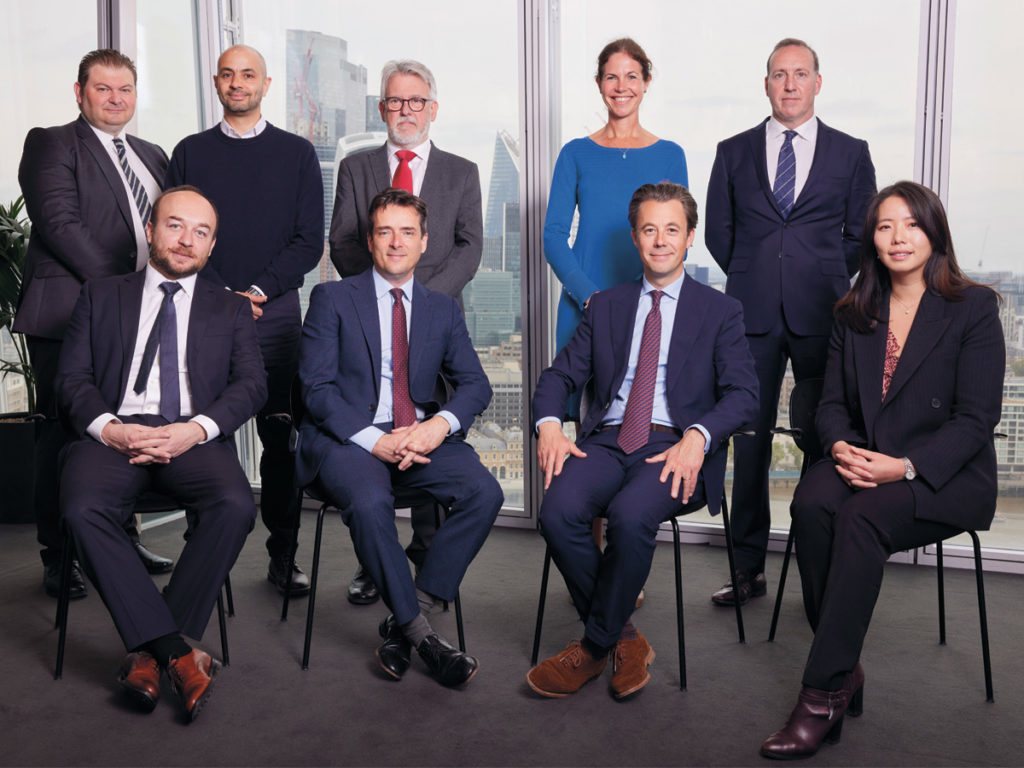
My biggest concern is that while green bonds are ringfenced for certain projects, if an issuer gets into financial trouble the proceeds could be used to pay a debt.
Henrietta Gourlay, Grosvenor Family Office
How measurable are a bond’s sustainable outcomes?
Petheram: It is not easy. The reporting from companies is mixed on the green bond side. Only half of issuers produce an impact report and two-thirds a use-of-proceeds report.
It is improving. But I worry about the efficacy around some of the numbers coming out. It is particularly challenging in green bonds, which is a market that is supposed to make it easier yet it seems harder in some respects.
There is a pathway for making it better. Data provider groups are starting to build out data on green bonds. But if an issuer issues a green bond they report against a pool of green assets, so you do not know what the impact of that one particular bond is.
For me, the most useful component of an impact report is real world examples.
Emmons: It goes back to the importance of evolving the reporting framework. At COP26 initiatives were put forward by ISS, IFRS [International Financing Reporting Standards] and TCFD [Task Force on Climate-related Financial Disclosures].
We are heading in the right direction, but it needs greater industry standardisation which would make it easier to conclude that what we are being presented with is right.
There are many ways investors are evaluating the efficacy of their strategies. They are comparing ESG scores to representative market indices, which is not perfect but is a good starting point. They are assessing manager’s ability to avoid ESG landmines such as, say, Volkswagen.
By understanding the governance framework and a company’s policies you are less likely to be susceptible to that headline risk. They can assess the extent to which a sustainable-linked bond deviates from its KPIs. There are ways to evaluate this, but it is not perfect. The standardisation of the available data is sub-optimal in some cases.
Bikos: It has to do with what you are trying to measure. When it comes to carbon, there are frameworks we can apply but how do you measure the sustainable development goals?
It is hard to do it accurately. Then you force yourself to go down the route of making assumptions on top of assumptions to get to something “sensible”. We are not there yet, especially when it comes to the sustainable development goals.
We have made significant progress on the carbon side with scopes 1, 2, 3 and soon scope 4, which will be used to describe avoided emissions. The point is, when it comes to sustainable bonds, each of us around the table will have a different definition of what a sustainable bond portfolio is. This is the problem. We do not have a common definition, so we measure things in a way that fits what each of us is doing.
Forest: Why is that a problem? I have disagreed with official country ratings. We did not invest in Russia because our analysis differed from the rating agency. This is why we have active fund management.
We have the Green Bond Principles, but we still have to look at the reporting. A green bond was issued, for example, which had not published a report for three years, so we decided not the invest.
Bikos: What you define as sustainable may be a portfolio of issuers with high ESG scores plus a carbon transition plan. Some- one else may define it as a portfolio of bonds with sustainable development goals. The point is there is no core definition.
Forest: You say there is a lack of KPIs in terms of the sustainable development goals. There are also more and more KPIs in social bonds. It is a growing market and in social bonds we have new KPIs to target the sustainable development goals which are not linked to the environment.
Loughney: We will come to a standard. It is important because a lot of issuers know people just want to buy green and they will freeload and nothing will be solved.
There will be an improvement, but you will not get to critical mass without a standard imposed from above that allows institutions with the big money to make that decision. Then issuers cannot freeload anymore if they do not conform to that standard.
The standard will not be 100% perfect, but if you get to 70% of what you want to achieve then people who do not adhere to those standards will not get the benefit from issuing green or sustainable bonds.
Petheram: We have good standards in the Climate Bond Initiative, which have their own taxonomy, but they are not used to the extent they should be.
Forest: Let’s be realistic. It is difficult to have the same definition between France, the UK, the US and China.
Loughney: China maybe not, but we could in the US, the UK and Europe.
Petheram: It is about developing the technologies and developing the investment to facilitate the change. That is what a taxonomy needs to do.
Emmons: Could I pick up on the point about the scope emissions? I am excited but nervous about the introductions of scope 4 when there are still so many challenges in evaluating scope 3. There are challenges with understanding and evaluating the risks companies are exposed to through their supply chain.
Some companies are good at understanding the carbon footprint of all the inputs into what they are doing, like Apple. Other companies, however, are way o the mark on that.
This is one of our biggest challenges. Take a bank, for example, how do analysts understand the risks in their lending books? Or electric cars. If you want to build electric cars, you need batteries and to make batteries you have to mine seven rare minerals. Then you have to expand the national grid seven fold to cope with everybody’s power requirements.
It is a journey, we are going to get there, but there are a lot of challenges along the way when you are evaluating issuers from the perspective of the supply chain.
Yu: Sectors like banks, utilities or car makers, when it comes to new issuance, they are the ones who want to promote their climate transition strategies and to be more in line with market standards.
They are trying to engage more with investors and data providers to understand how they can measure and better disclose their Scope 3 emissions. More and more companies are disclosing their Scope 3 emissions and their climate KPIs. So, there are positive changes.
Forest: Green bonds could also be the answer. Toyota are coming up with green bonds to finance hybrid cars, which have KPIs around CO2 emissions saved per vehicle.
Emmons: To what extent will Toyota be able to accurately report on the emissions of all inputs into their unit production? Green bonds may be positive in that regard.
Yu: There are other options. There are social bonds and sustainability bonds. We engaged with the World Bank in their five-year rhino bond, varying final payment depending on the growth rate of rhinos. It is a symbolic development in the market in that it makes a real impact.
We will see more bonds like this going forward and not just green bonds. It is an interesting change.
Petheram: It was a great deal, but we couldn’t invest. We would have had to sacrifice return. I do not have a mandate to do that.
Yu: We do not receive a coupon until the bond matures. Its structure is focused on a real world outcome, compared to existing bond structure with financial return focus.
Forest: Sustainability-linked bonds are good instruments to promote sustainability strategies by monitoring KPIs.
Bikos: The problem our asset managers have with sustainability-linked bonds are the step ups. They are marginal – 25bps for missing your target for three years is nothing. They are not incentivised to improve.
Yu: For a small company, the revenue impact of a 25bps hit could be larger than for a big corporate. We need to focus on what KPIs are put in deals and, depending on the size of the company, we could suggest a higher step up. That depends on the engagement process before it comes to market.
Forest: It also depends on market conditions. It was 25bps when the bund yield was -0.20.
Petheram: It should be 500bps. You see that in hybrids when you want to massively incentivise something to happen, so 25bps is not right. The way it works is that they pay us when they miss their ESG targets, so the whole mechanism should change.
Will inflation impact sustainable debt portfolios?
Loughney: Not at the moment. Unless inflation is out of control and a government is downgraded and what we have spoken about falls off their agenda, but it is not having any influence at the moment.
Emmons: Generally, inflation is bad for real returns, but not any more so in the green space than conventional bond markets. Interestingly, to date there is no inflation-linked green bond market, but we understand that France has been mulling its first inflation-linked green bond, so that might be a catalyst for that market to open up.
Gourlay: Floating-rate green bonds have built in inflation protection.
Forest: The yield to maturity of a sustainable bond benchmark is close to 1.7%, so 1% higher than six months ago.
Petheram: You have made a subtle but important point: there is no difference between green bonds and the conventional market. Our fund was hit the same as other global credit funds when Russia invaded Ukraine.
As long as I have the breadth of opportunity to invest in, then my performance should be judged alongside global credit funds.
That is different to equities, where the tracking error risk or active risk of a green equity fund versus the broad global market is dominated by idiosyncratic stock-specific and sector risk that you do not get in the credit markets.
Emmons: You have raised an interesting point about the greenium, which we mentioned earlier. It might be modest in some areas and significant in others, especially at certain points in the cycle.
The situation in Ukraine is forcing up energy prices, which could induce more focus on renewable issuance, and so the wider consequences of this conflict could have a compressing effect on the greenium over the longer term.
Petheram: It is the opposite in the long term. In the short term, inflation and its relationship to financial conditions could cause a squeeze as we move through this year.
While market share might go higher, issuance in the corporate bond market is going to be lower than last year, but at the same time we have these box-ticking funds trying to buy green bonds, so it could be an interesting year.
Bikos: The impact of inflation on green and traditional bonds is identical. The influence inflation is having on sustainability is that big infrastructure projects especially the renewable infrastructure ones are stalling because the prices of raw materials that were let’s say $100 are now $170. This is the key problem we may face in terms of the transition.
Forest: The average duration of green bonds is longer because we have to finance long-term projects. We have more inflation, but “greenflation” – inflation coming from the transition – is the real risk.
Yu: More than 50% of headline inflation comes from energy prices. This is due to a lack of renewable capacity while capex from fossil fuels is delayed as no one wants to look at that anymore.
At the same time carbon prices are going up. We are in a long-term energy inflation trap. We need to focus on companies which have weak climate transition strategies, or countries like the US and China where the carbon tax regimes are not well reflected and will be heavily hit in the medium to longer term.
We need to differentiate between energy price inflation and the longer-term inflation in general.
What trends do you expect to emerge in sustainable debt?
Emmons: More and more investors are moving into funds with a more explicit ESG focus. It is not really a case of changing asset classes but rather one of improving the efficacy of your exposure to an asset class with a more explicit emphasis on risk and sustainable outcomes.
This is a journey but ultimately everyone knows that to build viable long-term fixed income portfolios they have to be aware of the ESG and the risks to sustainability.
Thompson: In the defined benefit space, as funds mature, investors are moving away from conventional funds to buy-and-maintain. The pressure on buy-and-maintain managers to incorporate ESG, particularly the E, is greater than it was three years ago. There is more money going that way.
Bikos: There is greater demand for low carbon products from our defined benefit, defined contribution and wealth management clients. This is big right now and will continue for at least two to three years.
Yu: When we interview bond fund managers, we have moved away from traditional ESG rating or negative screening such as controversial sectors. We want to know if they have a climate transition framework and how that is reflected in the portfolio.
Some managers talk about their climate transition framework and climate solutions, but when we look at the model portfolio, we often find focus on divestment on existing holdings. This is not what we want.
To make a real impact on the economy, we want to invest in climate solutions rather than divest from brown companies. As asset owners, we will be looking more at climate transition bonds, not just the ESG rating of a bond. This is the change we are seeing.
1) Article 8 funds promote E or S characteristics but do not have them as the overarching objective
2) Article 9 funds have sustainable goals as their objective.
3) MIndirect carbon emissions through electricity usage

